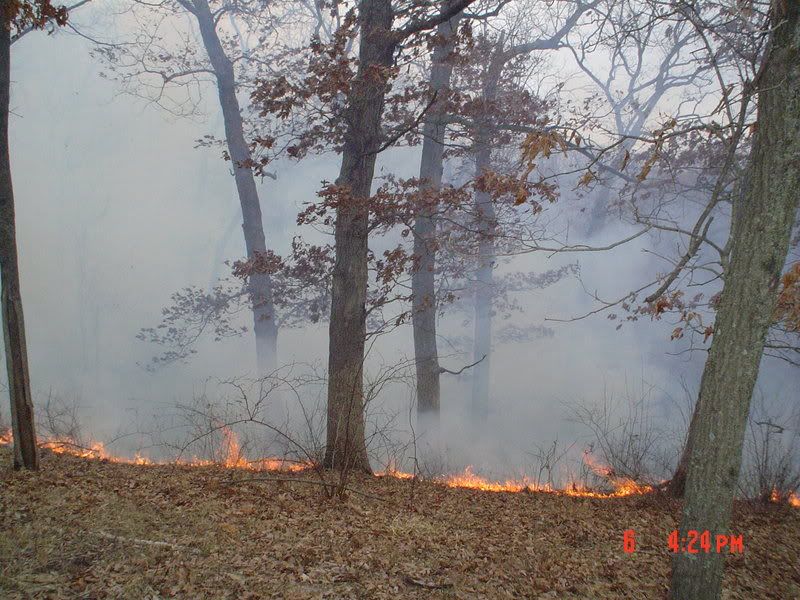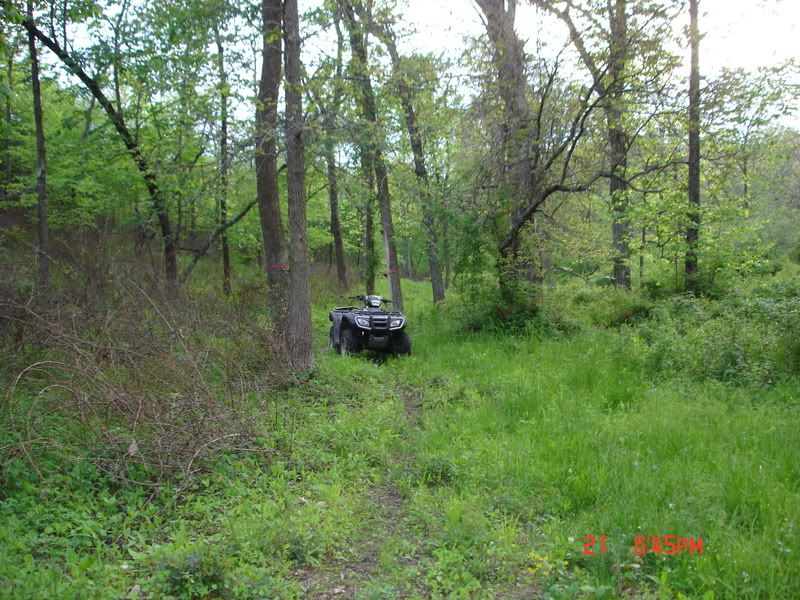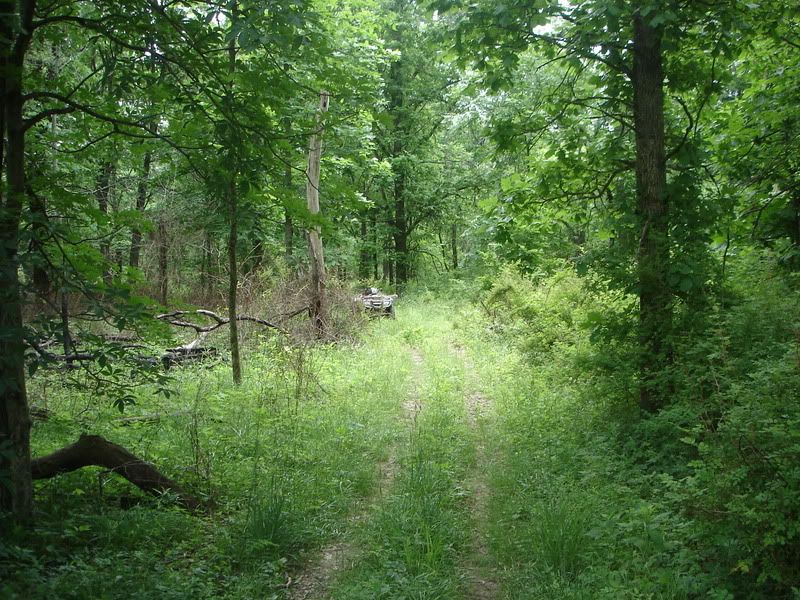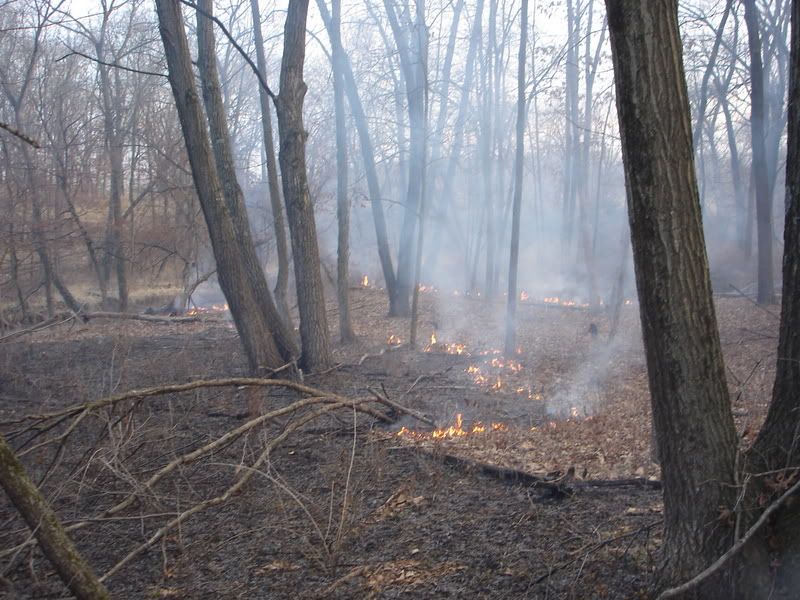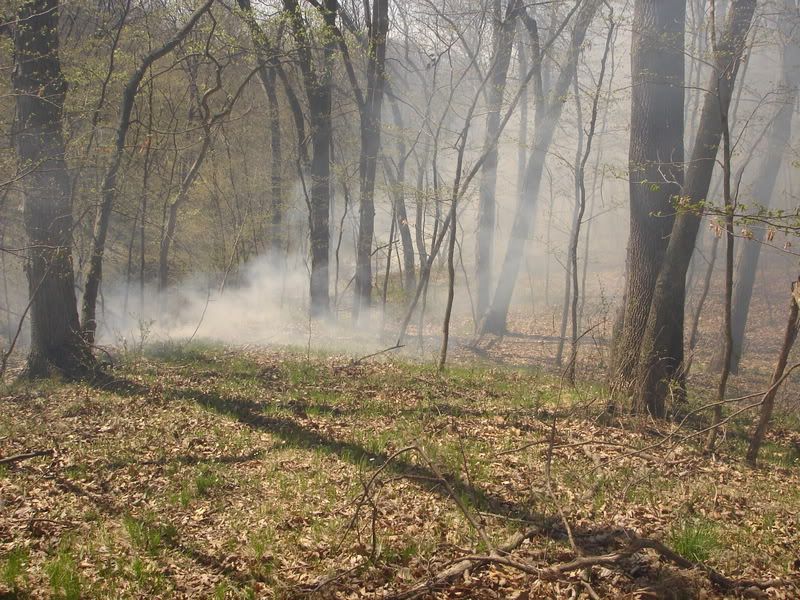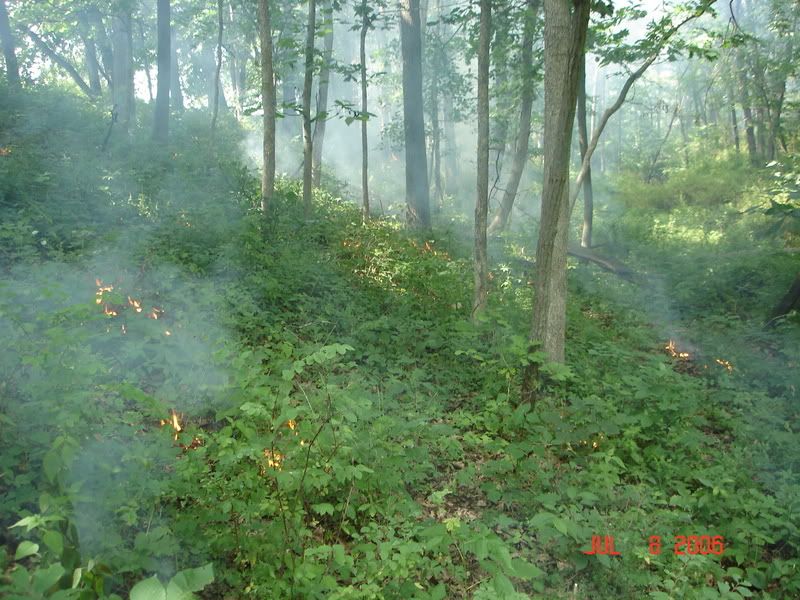I'm glad we converted you Paul ... burning timber should be a part of any whitetail plan, it's one management practice that can have a very positive impact for all wildlife and it's the cheapest, most effective foodplot out there ...if you don't burn down your neighbors farmhouse
Healthy oak forest need to be managed with fire as they have for thousands of years. Selective logging and absence of fire is slowly converting Iowa's forest from oak/hickory to basswood/maple/elm and including prescribed fire into your long term management plan is one way to stop this downhill slide and provide lots of food for your deer herd.
Too many Iowan's picture western forest fires when you talk about burning timber here. Unless you have a young cedar thicket with live limbs to the ground, our timber generally burns slow with low flame lengths and is often difficult to get a fire to carry.
There is usually lots of smoke and very little flame. Easy to control and put out. The only difficult part is old logs, and snags that do occassionally catch fire and require mop-up that can take days.
Fire invigorates many forbs, sets back overmature shrub species, and encourages oak seedling production.
The photo below was taken a few weeks after the burn from the same location.
On our farm we try to create as much diversity as possible. Some areas need to be left brushy and kept brushy to provide good bedding/hidding areas. We keep fire out of these areas and maintain the timber stand with a chainsaw. Other areas are periodically burned to eliminate or set back brush like multiflora rose or coral berry and release forb and oak seedlings. The left side of this trail is essentially a fire foodplot and the right side is thick bedding cover.
In general if you want to kill brush, burn it after it has completely leafed out. If you just want to just set it back for fresh browse, burn before it breaks bud.
Prescribed fire can be a great tool and something we'll always utilize but it's not for everyone. Don't burn unless you are prepared to deal with a wildfire. Consult with someone that has burn experience and the Pheasants Forever Habitat Specialists are an excellent tool. They may seem expensive but if you have them do a burn or two on your property, consider it an education cost so you can eventually do your own prescribed burns. If you go out and burn with no experience and little equipment and end up with a $500,000 bill for fire suppression cost and your neighbor's house, the PF bill you would have paid will seem pretty cheap.







